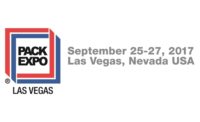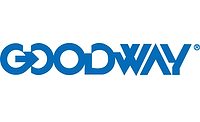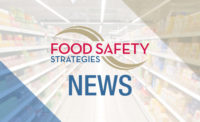Packaging
PACK EXPO preview: Easing product safety concerns in an uncertain climate
How brands can leverage packaging to uphold consumer expectations amid the COVID-19 crisis

Consumers are interested in more protective packaging during the COVID-19 pandemic.
Photo courtesy of Getty Images
Amid the uncertainty from the new coronavirus, consumers are practicing new approaches to various aspects of their lives, including how they conduct visits with loved ones or how they clock in for work. In particular, COVID-19 has prompted a major shift in how people shop. The unknown nature of the virus has led consumers to be hypervigilant about where and how they retrieve their products. Shoppers want to feel confident that the goods they bring into their homes are safe and secure, posing no risk of germ spread—and as a result, virus transmission.
Within this outbreak, packaging is being recognized for its long-standing performance in upholding product safety and offering consumer protection. By leveraging these existing benefits, manufacturers can help to quell consumer concerns and maintain their confidence in the product.
Employing extra protection
As the final barrier between a product and the consumer, packaging has always served a critical role in product safety. No matter the format, it has one core duty: safeguard the product to the point of use. While packaging’s role and performance rates have not changed during COVID-19, consumer behaviors have, making it important to understand where shoppers purchase products and how they use them. In some cases, consumer needs may require packaging where it was not utilized before. In other cases, consumers may reach for different configurations of packaging, such as varied package sizes. In either scenario, the packaging becomes an agent in contamination prevention.
Consider toilet paper, an essential item flying off virtual and physical shelves during the pandemic. Prior to COVID-19, consumers may have reached for megapacks of the rolls, purchasing a warehouse-sized bundle encased together in plastic. Now, consumers may prefer to reach for bulk quantities with smaller, individually wrapped units within. It allows them to share smaller quantities of toilet paper with family, friends or neighbors in need, with the confidence that those rolls are unopened and thus have remained sanitary.
This same logic may be used with other personal care or cleaning products. Antibacterial wipes or hand sanitizers, for example, are experiencing extremely high demand. In the home, the preference may be to purchase one large bottle of hand sanitizer with a pump and to station it just inside the front door or in the kitchen for regular use. On the go, for consumers making trips to the grocery store or delivery drivers dropping off packages, a smaller bottle with a flip-top cap may provide a more secure, convenient experience. These formats utilize the same materials, but simply offer them in different configurations—and both may end up in the same home.
In the food and beverage world, current consumer concerns may center less around how they will use the product and more so on where they are purchasing it. Baked goods can serve as a prime example of this changing mindset in action. Pre-coronavirus, a consumer may have walked into a grocery store, headed to the bakery section and used tongs to take a fresh croissant out of a clear display case, placing it into a paper sheath and into their cart. Right now, in consideration for the safety of all consumers, the store likely only offers croissants that are wrapped and sealed and present no uncertainties for contamination.
Finally, manufacturers must consider that consumers are currently choosing to make fewer trips to the store and to stockpile their goods, with the goal of limiting their exposure to others. This tendency underscores the importance of packaging in enhancing shelf life. Across formats, packaging serves as a critical barrier to oxygen, bacteria and other elements that can compromise the product and lead to spoilage. For products with shorter life spans, such as produce, meat and dairy products, manufacturers can utilize additional packaging technologies such as modified atmosphere packaging (MAP) or high pressure processing (HPP). Both of these methods optimize the product in the package, killing microorganisms and maintaining specific oxygen and moisture levels long-term—key controls for promoting longer shelf life.
Empowering through information
In addition to leveraging the capabilities of packaging, greater communication can serve as a valuable aid in maintaining consumer trust in products. In such an uncertain time where contaminants and other dangers loom large, they may be more inclined to educate themselves on the supply chain and pay closer attention to what is in their products and how to use them safely. This shift provides an excellent chance for brands to not only be transparent about what they’re doing to address COVID-19-related issues and to keep consumers safe from the virus, but to drive awareness of additional steps the brand takes to deliver a safe, healthy and trustworthy product.
With this in mind, brands may benefit from package designs that place information on sourcing methods and supply chain journeys front-and-center. They can also take this opportunity to use labeling techniques and printing methods that can prominently and clearly highlight important language on how the product should be used, sealed and stored, etc. to help protect consumers from foodborne illnesses or any other dangers.
Improved label design may also be a helpful tactic for smaller and midsized brands trying to stay afloat during the pandemic. As items sell out both in stores and online—particularly those from household names consumers already know and trust—consumers may reach for lesser-known brands they have never tested. In this case, in which consumers are deciding between remaining options, they will likely look for specific identifiers that address their needs, such as key ingredients or health benefits. Brands that check those boxes may land in the physical or virtual shopping cart when their packaging can effectively communicate those characteristics.
Beyond educating and informing consumers about their brands, manufacturers can find value in more regular engagement with their customers. Understanding what measures are resonating with customers during COVID-19—what formats have been helpful for them, or what information provides extra reassurance—can help ensure their needs are met. These answers may come in the form of surveys or simply by monitoring purchasing habits. No matter the method, taking the pulse of today’s consumers may help to make them feel safer, happier and heard—far beyond the point at which the COVID-19 curve flattens.
As manufacturers and end-users navigate the challenges posed by COVID-19 and its impact on consumer behavior, the new live, web-based PACK EXPO Connects 2020 (November 9-13), produced by PMMI Media Group, will provide the same opportunities and insights the industry has relied on through the PACK EXPO portfolio of trade shows for more than 60 years. The event will facilitate exhibitor and attendee interaction through live chats, product and equipment demos, and educational sessions. More information is available at packexpoconnects.com.
About PMMI
PMMI, The Association for Packaging and Processing Technologies, represents more than 900 North American manufacturers and suppliers of equipment, components and materials as well as providers of related equipment and services to the packaging and processing industry.
Looking for a reprint of this article?
From high-res PDFs to custom plaques, order your copy today!





